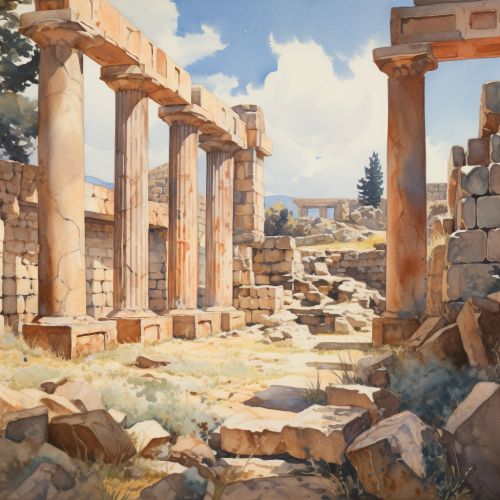Minoan civilization
Overview
The Minoan civilization was a Bronze Age civilization that arose on the island of Crete and flourished from approximately the 27th century BC to the 15th century BC. It was rediscovered at the beginning of the 20th century through the work of British archaeologist Arthur Evans. The term "Minoan" refers to the mythic King Minos and was coined by Evans, who identified the site at Knossos with the labyrinth and the Minotaur. The Minoan civilization has been described as the earliest of its kind in Europe.
Geography and Economy
The Minoan civilization was centered on the island of Crete, located in the eastern Mediterranean. The island is characterized by a mountainous interior, fertile coastal plains, and a mild Mediterranean climate. The Minoans were primarily a mercantile people engaged in overseas trade. Their culture heavily influenced the Mycenaean civilization on mainland Greece, which was in close contact with the Minoans.
The Minoan economy was based on agriculture, with wheat, olives, and grapes being the main crops. They also kept livestock, including sheep, goats, pigs, and cattle. The Minoans were skilled metalworkers, producing tools, weapons, and ornamental objects from bronze, gold, and silver. They were also known for their pottery, which was often decorated with intricate designs.


Society and Culture
Minoan society appears to have been divided into two classes: the ruling elite and the common people. The elite lived in large, complex palaces, while the common people lived in smaller, simpler houses. The palaces were centers of administrative, economic, and religious activity. They were elaborately decorated with frescoes depicting scenes from Minoan life, including religious rituals, bull-leaping games, and marine life.
Minoan religion appears to have been heavily influenced by nature, with many of their deities associated with natural elements such as the earth, the sea, and the sky. The Minoans worshipped a number of deities, but the most important seems to have been a goddess often referred to as the "Minoan Goddess" or the "Mistress of the Animals". The Minoans also appear to have practiced human sacrifice, as evidenced by the discovery of human remains in a number of sanctuaries.
Language and Writing
The Minoans used two forms of writing, known as Linear A and Linear B. Linear A has yet to be deciphered, but it is thought to represent the Minoan language, which is not related to any known language. Linear B, on the other hand, was used to write Mycenaean Greek and was deciphered in the mid-20th century.
Decline and Fall
The reasons for the decline and fall of the Minoan civilization are not clear. There are several theories, including natural disasters such as earthquakes or volcanic eruptions, invasion by foreign peoples, and internal social and political unrest. The most widely accepted theory is that the Minoan civilization was weakened by a major volcanic eruption on the nearby island of Thera (modern-day Santorini) around 1600 BC, and was subsequently conquered by the Mycenaeans.
Legacy
The Minoan civilization left a significant cultural legacy, particularly in the field of architecture. Their palaces, with their complex layout and elaborate frescoes, influenced the later Mycenaean palaces on mainland Greece. The Minoans also made significant contributions to art, as evidenced by their pottery, sculpture, and jewelry.
